
I have been taking care of indoor plants for a long time and many people do not know how to take care of these plants in hot weather. Because of this, they follow some wrong methods due to which their plants cannot grow properly they get frustrated thinking that indoor plant plants are not for them but in this blog today I will share some things and share case studies that after knowing You will find it very easy to grow indoor plants because I will share with you the things that I have taken care of most in my long 8-10 years to grow my plants correctly and fast. So let’s begin
The goods of High Temperatures on Plants and their Growth in summer
Indoor plant fluently develops problems similar to dehydration, burning of the leaves, and development of pests during summer. out-of-door plants may lick due to the natural conditions; still, Indoor plants may deteriorate since they’re in a controlled terrain which can be adverse during the hottest month. Then are some common problems that arise with Indoor plant in summer here are some common problems that arise with Indoor plants in summer
Dehydration This means that shops; the soil tends to dry out briskly when it’s hot or there’s further exposure to the sun.
Leaf Burn: In this case, leaves get burned by the sun leading to the product of brown tones that favor conditions and weak shops.
Pest Infestations: Favorable conditions include warm and sticky climates, making some of the typical pests seen to be spider mites, aphids, and fungus gnats.
Nutrient Deficiencies: Increased constant can cause soil to be washed of nutrients meaning Plants will be left starved.
Agitation It’s important to specify the Consequences of Neglect
Are the charges that the friars were careless in their conservation of the structures and the damages that arose from that negligence?
Failure to tend to the plants outside during summer comes with the following goods. plants that aren’t adequately watched for during the summer months may exhibit Plants that aren’t adequately watched for during the summer months may parade
- Wilting and Drooping: An egregious symptom is that the plant is dry, and this is a result of the limited force of water on the plant.
- Yellowing Leaves: A complaint that’s generally a result of overwatering, lack of nutrients, or having pests attacking the plant.
- Leaf Drop: Falling of leaves during downtime for water conservation that sends a signal that a plant is under stress.
- suppressed Growth: A careless manner of tending a plant will make the plant stop growing, become weaker, and be prone to conditions.
- plant Death: Leaving your plants unattended for some certain time may reach its worst, your lovely Indoor plant may wilt down or die.
Result Total operation of Indoor plant about Summer
To help these issues and keep your Indoor plant healthy and vibrant, follow these detailed strategies To help these issues and keep your Indoor plant healthy and vibrant, follow these detailed strategies
Watering Wisely
Understanding Plant Needs Every plant has different requirements concerning water. It means that members of succulents and cacti bear a lower quantum of water as compared to ferns and tropical shops. Speaking about a particular type of plant you’re planting, learn further about their conditions.
Watering Schedule In the extremities of the hot and sticky climate reduce the frequency of water irrigation. utmost of the Indoor plant needs soddening more frequently in summer, though its excess is inversely murderous as insufficiency.
Checking Soil humidity Feel the soil with your fingertip to know how wet it is. It’s recommended to water the plant y if the upper inch of the soil is dry. However, also one should use a humidity cadence for perfection If that isn’t possible.
Watering fashion Don’t water-soak the leafage since this exposes the plant to numerous fungal conditions; water rather than the soil. One should make sure that water doesn’t accumulate in the base of the plants as it may lead to water logging.
Morning Watering It’s judicious to water your plants during the morning because it enables them to have acceptable water for the day and because any water on the leaves after the saddening can fluently fade.
Light Management

Indirect Light Some of the most common leafage plants that should be grown under low light conditions include. Transplant plants that are near windows, especially when the sun scorches the plants’ leafage.
Sheer Curtains It’s recommended to use sheer curtains to sludge the sun let in, this way what’s let in will be sufficiently bright without having to scorch the shops.
Rotate plants Revolve your plants regularly at least formerly in three or four days so that they get an equal quantum of light and don’t grow crooked.
Grow Lights If natural light is shy, substantially in summer when windows are closed in veritably hot rainfall, grow lights can be used.
Temperature Control

Optimal Temperature Range Some of the common Indoor plants generally prefer average room temperatures ranging from 65- 75 °F or 18- 24 °C. It’s also important to refrain from placing plants in any directions that face the air exertion reflections or the windows that allow fresh air in.
In moisture situations during summer the air becomes dry and this is true for the inside air of the house too. Increase moisture by scattering water on the shops; using a water-filled charger, or placing the pot on a charge of water with a pebble.
Ventilation always understands tailwind around your plants as this would help earth and fungi development around the shops. People can help direct tailwind from the suckers on shops.
Pest Management
Regular Examinations It’s also important to examine the plants constantly for a suggestion of the pests’ presence. Check under the leaves, and around the soil to find bugs or eggs.
Natural Remedies You can use fungicides similar to neem oil painting, insecticidal cleaners,s or natural remedies similar to a cleaner result of dishwashing water.
Insulation should one plant be attacked by pests; remove it from the other plants to avoid spreading the pests.
Cleanliness some plants have fallen leaves close to them and one needs to clear the area so that it doesn’t attract pests.
Nutrient operation
Fertilizing Schedule Summer is favorable for the growth of utmost plants More plants are produced in the summer season than in any other season. Sides for photoactive plants alternate, water-answerable organic toxin every 2- 4 weeks. It’s also important to use the right dilution on the toxin depending on the type of plants that you’re growing as recommended on the pack.
Organic Options You may use compost tea or worm castings to include the organic toxin for the plant nutrient supplement.
Avoid Over-Fertilizing redundant the toxin is also not good for your shops. Possible suggestions for over-fertilizing the crop include scorched leaves, yellowing of leaves, and confined growth of the plant.
Repotting and Pruning
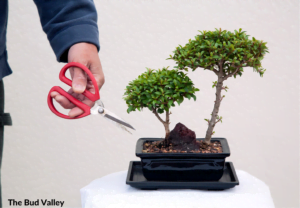
Another good time to repot your plants is during the summer especially if the plants have outgrown the pot. Elect a pot, which is one size bigger, and fill the pot with fresh replanting media.
Pruning specifically, removes the dead and yellowing leaves to promote new bones
And to help in nurturing the plant.
Supporting Growth When using rovers or hanging shops, it’s prudent to install spacers similar as stakes or casinos to the plants so that they know where to cleave onto.
A large number of mind-boggling case studies and real-life exemplifications
To illustrate these strategies, let’s look at many real-life examples To illustrate these strategies, let’s look at many real-life exemplifications
The first case is where the fern is dehydrated
An aspect that indicates it needs to be rescued from its current state.
Problem One of the Boston Ferns placed in a sunny, living room began to wilt; some of the fronds turned brown and bricked to the touch.
Result The proprietor of the plant also changed the time interval of saddening the plant and made sure that the soil was neither too wet nor veritably dry. They dislocated the fern to an area with lower direct t sun to reduce the quantum of heat and moisture the plant receives; through saddening the plant using mist daily and placing a charger of water hard.
Outgrowth In a couple of weeks the fern was doing much better, and new, fresh fronds were opening.
Case Study 2 How to Annihilate Spider Diminutives in a Spider Plant
The problem Spider Plant in a home office needs to be treated for spider diminutives as the leaves were yellow and fine netting was present on the plant.
Result The plant in question was insulated and also was contemporaneously treated with neem oil painting spray. To exclude the diminutives, the proprietor therefore raised the moisture near the plant and used a wet wipe on the leaves.
Outcome Regular treatment and follow-up checks eventually helped to deal with a spider mite pest and restore the plant’s health.
Case Study 3 A Trial to Encourage Germination of a Pothos
The problem they were in pathetic conditions, the leaves were yellow and the vines were growing weak, a Pathos plant to be precise.
Result It has been scattered to a bigger pot with new compost and interspersing nitrogenous and potash-containing toxins were applied every fortnight. The proprietor made sure that it only gets bright light that isn’t direct and only gets to be doused at the right times.
Outgrowth The Pathos passed a favorable response, which was characterized by a sprouting of new beautiful healthy leaves.
Indoor Plant Care Kit Tips and Particulars Necessary for Plant Care
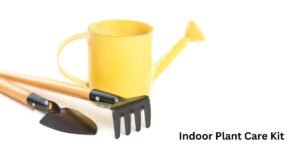
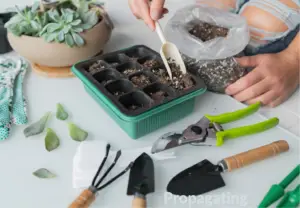
Individualities prefer to have Indoor plants in their home terrain because they aerate the terrain in addition to giving it that beauty. still, the Indoor plant should be in good health and love, especially during the summer period since heat and sun could be adamant walls. Continued, you’ll be suitable to know how to put together your Indoor plant care attack through the principles of daddies and comprehend what Problem, Agitation, and Solution are.
Problem Disclaimer utmost of the corridor of the Indoor plant is more or less likewise; hence the common challenges participated are as follows
Taking care of the Indoor plant is in no way an easy task. nevertheless, some issues can do which can be dealt with during the summer, for case; Some of the most common issues include some of the most common issues include
- Inconsistent Watering occasionally could be a result of either over-irrigation or irrigation causing similar goods as root spoilage, yellowing of the leaves, and general suppressed growth.
- Indecorous Lighting and inordinate quantities of direct sun exposure will burn the leaves of the plant while shy light will make the plant grow thin and weak.
- Pest Infestations Climb root promotes pests similar to spider diminutives, aphids, and fungus gnats to infest the plants once the indoor temperatures are steeped up.
- Nutrient scarcities are several problems with plants due to malnutrition; the leaves of the plant may yellow or indeed turn brown.
- Moisture Issues Most Indoor plants need advanced RH( relative moisture) than generally handed inside the houses and condos, most of the time and particularly during summer when centralized air exertion is used.
Agitation He substantially concentrated on the nebulosity of US Policy Interests and the Interventionist Counteraccusations of the Status Quo.
The failure to address these general problems results in several consequences for your Indoor plants. Without proper care, plants may show signs of torture similar, plants may show signs of torture similar as
- Hanging and hanging Conductive with dehumidification or root issues.
- Yellowing Leaves This is substantially a suggestion of overwatering with the shops, insufficiency of nutrients, or an infestation of pests.
- Brown Leaf Tips Can be caused by the deficit of humidity or by the operation of toxins in large quantities.
- Suppressed growth Suggests that the plant isn’t entering the right nutrients or in some cases not enough light.
- plant Death They also deny their plant life the introductory care that it needs with the result that it may sluggishly wither down to death if left neglected for too long.
Solution: The Ultimate Indoor Plant Care Kit
To avoid similar issues and ensure the Indoor plants remain healthy, there’s the necessity of assembling proper plant care accessories. They are the crucial factors of an Indoor Plant Care Kit plant care tackle and how to use them effectively Here are the crucial factors of an Indoor Plant Care Kit plant care tackle and how to use them effectively
Watering Tools
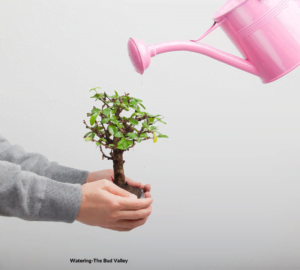
Watering Can A well-made watering can with a long snoot lets water get to the roots with minimum leafage moistening that causes fungi and mildew.
Spray Bottle
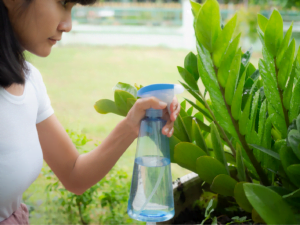
If care is being handed to a plant that needs advanced moisture as compared to the rest of the terrain, also the use of a spray bottle can spot water over the leaves of the plant and make the moisture of the external terrain advanced.
Humidity cadence
A humidity cadence can help you in measuring the exact humidity content of the soil avoiding the cases of over-watering or under-soddening the shops.
Lighting results
Grow Lights It’s still important to note that indeed at certain times of the time or in some corridors of the world, natural light is rare, in similar circumstances grow lights are available with the right diapason for plant growth. Search for the grow lights that are in LED form and are effective in their use of energy, also they should have the right rate of red and blue frequentness.
Sheer Curtains They can be employed in reducing direct sun to shield the plants from splint burn while at the same time furnishing acceptable light.
Reflective shells One is to place the plants close to the glasses, this way the natural light in the room ‘ travels around ’ and the plants admit illumination adequately.
Pest Control
Neem Oil refers to a type of germicide that controls numerous pests but is inoffensive to the plant. Tea can be made by using neem oil painting, water, and many drops of dish cleaner to make a spraying result.
Insecticidal Cleaner They are effective substantially on soft-bodied insects like aphids, Red spider diminutives, white canvases, etc. It’s fairly inoffensive for the utmost of the plants and also provides a way of dealing with the infestations.
Sticky Traps These traps can be used by encircling the plants where canvases similar to the fungus gnats will be trapped.
Nutrient operation
Balanced Toxin a slow-release, all-purpose toxin which is answerable in water should be used to allow your plants to admit the nutrients they need. This depends on the manufacturer’s recommendation, as indicated on the product’s pack about dilution rate and frequency of operation.
Organic Diseases Natural emendations could include compost tea or worm castings to name but many. These are particularly helpful in world organic auditoriums.
Soil emendations It’s recommended to introduce perlite or vermiculite into the blend to enhance the rudiments of aeration and drainage in the soil for the growth of healthy roots.
Moisture Control
Humidifier Being in an area with low moisture, or if you use an AC most of the time, having a humidifier to keep plants of the tropics ’ demanded moisture can be of help.
Moisture Charger That’s putting a charger that contains water and pebbles beneath the shops. Concerning evaporation, it raises the wet bulb around the plants owing to the water loss.
Misting Bottle maybe, using spray hubby can help raise moisture and therefore avoid browning of the tips that are observed at the end of the leaves.
Plant conservation Tools
Pruning Shears Sterile sharp pruning shears are used for cutting dead or yellowing leafage or branches that intrude with the natural development of new kids or shoots in your shops.
Repotting inventories it’s judicious to have many pots of different sizes and fresh compost accouterments to repot plants that have come intolerant with their current pots.
Plant stakes and Ties These are of great significance whenever there’s a need to have pillar-like structures supporting climbing or running plants to grow in a given direction.
Real-Life Case Studies
To illustrate the effectiveness of a well-equipped plant care tackle, let’s explore some real-life examples To illustrate the effectiveness of a well-equipped plant care tackle, let’s explore some real-life exemplifications
Case Study 1 Bringing Back to Life a Dying Peace Lily
Problem A plant included in the Peace Lily was hanging, the leaves were hanging down and the soil was dry.
result In the story, the proprietor determines that the soil is too dry by using a humidity cadence. To water the plant they employed a watering can and this ensured the roots of the plant were wettest as needed. Also, a moisture charger was put under the plant to raise the moisture of the air around the plant.
Outgrowth For many days the Peace Lily woke up from its slumber and its leaves came firm and bright green again.
Case Study 2 Aphids Management & Control on Pathos
Problem In one of the houses, there was a plant called Pathos that had been placed in the living room; the leaves of this f plant began to turn heroic and the plant started to trick, all because of aphids.
result according to my observation, the proprietor took a spray bottle and filled it with an admixture of neem oil painting with water plus dish cleaner. They also put sticky traps within the plant emulsion so that any flying insects would be trapped in them.
Outcome After constant operation, the population of the aphids was greatly reduced, and Pathos started to appear with suggestions of new and healthy development.
This case will concentrate on perfecting the growth of a plant called the Fiddle Leaf Fig.
Problem A Fiddle Leaf Fig was handed limited nutrients, and started debilitating; it was slow growing and had pale leaves.
Result The proprietor put it close to a window with dimmed light and stoked with an LED grow beacon at night. They also established a routine of fertilizing with a balanced, water-answerable toxin.
Outgrowth The Fiddle Leaf Fig also stayed healthy and grew new leaves that were vastly darker and thicker.
Finally, I want to say that all the things I have presented here are from my personal experience and if you take care of your plants in this way, I can say with 100% certainty that your plants will be much better than before. Also in this blog, I have discussed all the tools needed to care for plants. That’s it for today, talk about it in the next blog
Thank you

